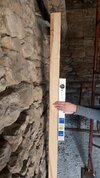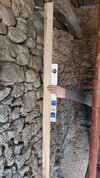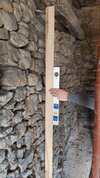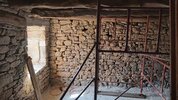- Joined
- 3 Mar 2023
- Messages
- 7
- Reaction score
- 0
- Country

Hi, I have a barn in France that is built using traditional dry stone methods with rubble in the centre. Inside the barn, I have a dividing wall that is also dry stone but doesn't appear to be tied in to the externall walls. I wanted to point it with lime mortar but have found out that it leans by about 5cm each metre (I measured a 2 metre lenght with a plumb bob an it was 10cm out). The wall is made with pretty big and decent stone and about 50cm thick.
I think it's been like it for the twnety years we've had the property and, visually, it looks ok, but I'd like some advice to know if it needs to come down and be rebuilt. Any advice welcome.
Thanks,
I think it's been like it for the twnety years we've had the property and, visually, it looks ok, but I'd like some advice to know if it needs to come down and be rebuilt. Any advice welcome.
Thanks,





